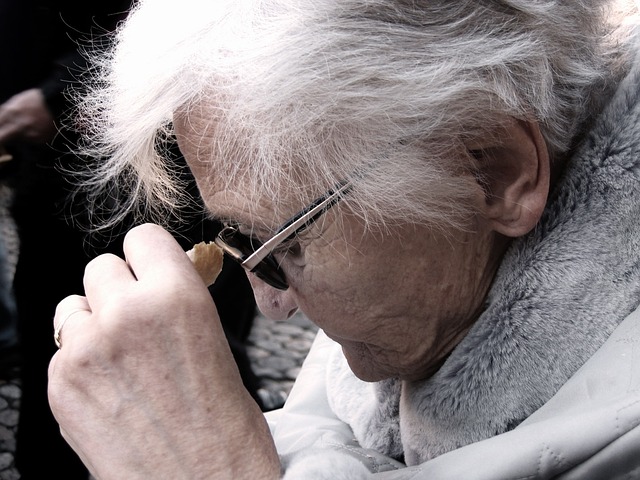Liverpool's antique silver jewellery stands out globally for its captivating intricate details, reflecting the city's rich costume jewelry heritage. From Victorian to Art Deco eras, pieces feature elaborate engravings and abstract patterns, showcasing exceptional craftsmanship. These historical treasures not only elevate modern outfits with nostalgia but also serve as unique testaments to Liverpool's social and cultural dynamics. Proper care is essential to preserve these delicate, handcrafted works of art, ensuring their intricate designs remain intact for future generations.
Delve into the enchanting world of antique silver jewelry, where intricate ornate details and elegant engravings meet. This captivating piece offers a unique glimpse into the past, especially highlighting the distinctive charm of Liverpool costume jewellery. Explore the enduring allure of vintage silver, learn to recognize its exquisite craftsmanship, and discover the rich historical context behind these timeless treasures. From identification tips to care instructions, this guide equips you to appreciate and preserve your antique finds.
- The Appeal of Antique Silver Jewelry
- Recognizing Ornate Details in Silver Pieces
- Historical Context and Engravings on Liverpool Costume Jewellery
- Caring for and Appreciating Your Antique Silver Findings
The Appeal of Antique Silver Jewelry
Antique silver jewelry has long captivated collectors and enthusiasts alike with its timeless elegance and intricate craftsmanship. The appeal of these vintage pieces lies in their unique character and historical significance. Each antique silver piece tells a story, whether it’s an ornate brooch from the Victorian era or a delicate pendant dating back to the Art Deco period. The attention to detail is remarkable, featuring elaborate engravings, twisted wires, and textured surfaces that showcase the skill of skilled silversmiths of yesteryears.
In Liverpool, known for its rich cultural heritage, costume jewellery enthusiasts often find a treasure trove of antique silver pieces. These vibrant markets and antique shops offer a chance to discover one-of-a-kind jewellery that was once part of grand ball gowns or everyday attire. The allure of antique silver extends beyond its age; it’s about embracing a bygone era and owning a piece of history that doubles as a stylish accessory, adding a touch of nostalgia and sophistication to any modern outfit.
Recognizing Ornate Details in Silver Pieces
When assessing antique silver jewelry, particularly from Liverpool’s rich history of costume jewellery, one of the most captivating aspects is the intricate ornate details adorning each piece. These elegant designs often feature elaborate engravings, which can range from floral motifs and scrollwork to more abstract patterns. The level of craftsmanship involved in creating these detailed patterns is a hallmark of fine antique jewelry.
Ornate details in silver pieces can be found on various components such as the band of a ring, the back of a brooch, or the entire surface of a pendant. Artisans of yesteryear spent countless hours meticulously carving and shaping these designs, making each piece unique. The more intricate the detail, often the higher the value, especially when considering the historical significance and craftsmanship involved in Liverpool’s costume jewelry industry.
Historical Context and Engravings on Liverpool Costume Jewellery
Liverpool, a bustling city with a rich history, has left its mark on the world of costume jewellery. The intricate designs and delicate craftsmanship of Liverpool costume jewellery often reflect the social and cultural dynamics of the era they were created in. During the Victorian period, for instance, silver jewellery adorned with ornate engravings and detailed motifs became a symbol of status and sophistication. These pieces not only served as functional accessories but also as tangible expressions of one’s identity and social standing.
Engravings on Liverpool costume jewellery often depict a wide range of themes, from floral patterns to scenic landscapes and even personal monograms or symbols. Such intricate work required skilled artisans who could meticulously carve these designs into the silver, enhancing its aesthetic appeal and value. These engravings not only add a layer of historical context but also make each piece unique, making them highly sought after by collectors today.
Caring for and Appreciating Your Antique Silver Findings
Antique silver jewelry, like that found in Liverpool’s costume jewellery scene, is a delicate and valuable asset. To preserve its beauty and ensure longevity, proper care is essential. Begin by storing your pieces in a cool, dry place, away from direct sunlight and moisture. A soft cloth or pillowcase can provide a safe, protective environment for these treasures. Polishing with a microfiber cloth will keep the silver gleaming; however, be mindful of using excessive force, as it may damage the intricate engravings.
Regular cleaning is another vital aspect of caring for antique silver. Use a mild, water-based soap and a soft brush to gently remove any dirt or oxidation. Rinse thoroughly and dry immediately to prevent water spots. Remember, Liverpool costume jewellery often features ornate details; handling these with care will ensure their integrity for years to come, allowing you to truly appreciate the craftsmanship and unique designs that make each piece special.
Antique silver jewelry, with its intricate ornate details and engravings, offers a unique glimpse into history. The historical context of Liverpool costume jewellery adds a special charm, making each piece a valuable artifact. By recognizing the exquisite craftsmanship and understanding the care required, collectors can fully appreciate and preserve these timeless treasures. Whether as a fashion statement or an investment, antique silver jewelry remains a captivating and enduring choice for those who admire the past.
